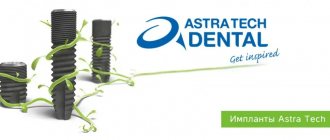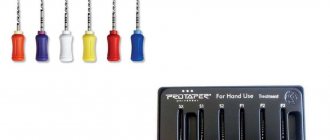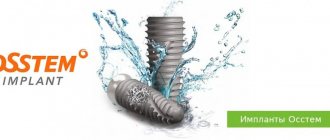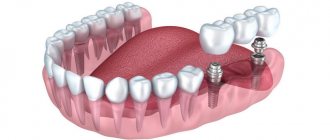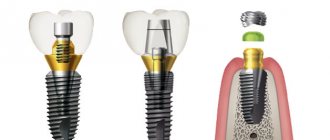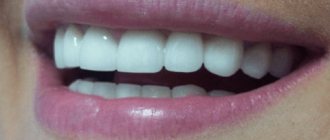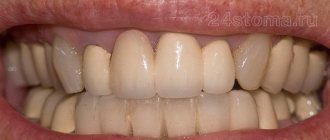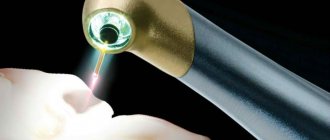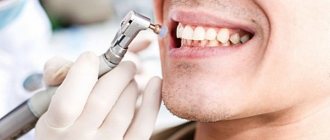French Anthogyr implants: professional installation at affordable prices, guaranteed results, support throughout the entire period of treatment and rehabilitation.
The modern market for dental structures is diverse, among which it is difficult to find aesthetically perfect, reliable and durable products with high survival rates. The French Anthogyr implants, which are widely in demand in many countries around the world, are precisely such systems. Their impeccable quality is evidenced by relevant certificates and numerous reviews.
Moreover, implantation systems from this manufacturer can be installed in patients with different structural features of the jaw system and different bone sizes. The company presents a wide range of products, among which you can easily choose the optimal implant model.
The Implantmaster dental clinic works with leading manufacturers of dental products, which allows us to guarantee high-quality results for a long period of time. At the same time, you can always count on advice from an experienced specialist and support throughout the entire process of treatment and rehabilitation. Next, we will talk about what Antogir implants are, we will talk about their advantages and design features. You will also learn about the main types of such systems, find out how they differ from analogues, and you will be able to get acquainted with the prices established in our clinic.
Anthogyr implants: features
These French dental implants combine high levels of strength and ease of installation, which allows you to easily create a treatment plan and accurately predict the result.
A few words about the French manufacturer
The developer and manufacturer of these dental structures is the company Anthogyr (France), which is famous for its achievements not only in the field of implantology, but also positions itself as a manufacturer of other medical products. Thanks to the constant improvement of its products and the active expansion of its range, the company is able to guarantee the installation of dental systems of the highest quality. At the moment, Antogir implants are widely in demand in more than 90 countries around the world, due to their impeccable performance characteristics and affordable prices.
Technologies used
The manufacturing of Anthogyr systems is based on the use of innovative scientific developments and high-precision digital technology, which allows us to achieve the most effective results when installing them. Such French dental implants are made from titanium material of the highest purity, which has been exposed to calcium orthophosphate. Thanks to the use of the technology described above, a high ability for osseointegration is ensured, and resistance to the effects of corrosion is increased. In order to give the metal coating a roughness identical to that of bone tissue, the structure is treated with a special sandblasting machine using particles compatible with the human body. Testing the quality of the system is carried out using a special machine, applying mechanical stress and changing loads. After completing the product manufacturing process, sterilization and exposure to gamma rays are a prerequisite.
Implant structure
As mentioned above, the Anthogyr implant is made from purified titanium, onto the surface of which oxide is subsequently applied. This allows for an improved porous coating. Also, the structure is exposed to calcium phosphate, which helps prevent the negative effects of corrosion and minimize healing time.
The presented system is famous for its impeccable aesthetics, which can be achieved thanks to the special dimensions of the neck. Due to its improved shape, the fixed prosthesis will fit tightly to the gum, and the implant itself will be completely covered with soft tissue.
The locking mechanism is represented in such systems by a snap element, which serves to connect the adapter to the titanium structure. Due to this connection, it is possible to prevent the possibility of soft tissue penetrating into the internal cavity of the product. In the apical region, the implant has a cone shape, which facilitates its easy insertion into the bone without excessive trauma. In order to achieve maximum stability of the product, an improved thread is used, which has the same pitch along the entire height.
Precision in detail
Getting acquainted with Anthogyr solutions should begin with the history of the company, since it contains the secret of precise and high-quality production, thanks to which the products of this brand are in demand by specialists around the world.
Anthogyr's history goes back a long way and originates from a family-owned enterprise producing precision metal products for the watch industry, which originated at the beginning of the 19th century in the French Alps, the Arve River valley - the cradle of watchmaking and precision mechanics.
By the beginning of the 20th century, the family workshop grew into the Anthoine Émile et Fils factory with two production sites and acquired an industrial scale, strengthening its reputation in metal processing, the production of mechanisms and watch parts.
By the middle of the 20th century, it began producing its first dental instruments using lathes originally designed for the production of watch screws. This is how the Anthogyr brand appeared, which combined in its name the surname of the founder of the business Anthoine - “Antho” and “gyr” - from the Greek “to spin/turn”.
In 1947, the Anthogyr brand separated from its parent brand and became a completely independent business focused on dentistry.
Anthogyr production workshop, 1947
Over the next decades, the company produced various high-tech products and solutions for dentists. By the 1980s, Anthogyr had seriously expanded its product range: the company's engineers began to develop advanced solutions not only for dentistry, but also for spinal orthopedics, eye surgery, and even for the aerospace industry.
Successful experience in these areas with exceptional requirements for quality and precision in production allowed Anthogyr to launch the production of dental implants for other companies in 1983.
Gradually increasing its expertise in creating products for implantation, in 1997 Anthogyr began production of its own line of Anthofit dental implants.
The high quality and functionality of the first Anthogyr implants were highly appreciated, so in 2006 Anthogyr decided to focus its interests on dental implantology and already in 2009 introduced the new Axiom® implantation system.
In 2021, Anthogyr became part of the Straumann Group family.
Anthogyr plant, 2021, Sallanches (France)
In the Russian market, the core of Anthogyr's portfolio is the Axiom® implantation system, which is trusted by doctors around the world. We will talk about this implantation system further.
Our team of doctors
Maxillofacial surgeon, Implantologist
Bocharov Maxim Viktorovich
Experience: 11 years
Dental surgeon, Implantologist
Chernov Dmitry Anatolievich
Experience: 29 years
Orthopedist, Neuromuscular dentist
Stepanov Andrey Vasilievich
Experience: 22 years
Endodontist, Therapist
Skalet Yana Alexandrovna
Experience: 22 years
Orthopedic dentist
Tsoi Sergey Konstantinovich
Experience: 19 years
Dentist-orthodontist
Enikeeva Anna Stanislavovna
Experience: 3 years
Certified quality
Anthogyr produces implants of unsurpassed quality, which is confirmed by the international certificate ISO: 9001/EN 46 001.
Biocompatibility of titanium implants subjected to HRV sandblasting
Citeau et Coll45 in 2003 conducted an in vitro study on the biocompatibility of titanium surface sandblasted with HRV. The MC3T3-E1 bone cell culture was planted onto the surface treated in this way. No cytotoxic effects on bone cells were observed during the study. Another in vivo study on rat femoral epiphyses compared the body's response to titanium surfaces sandblasted with HRV and alumina. In the first case, contact osteogenesis was noted. On smooth surfaces, as well as surfaces sandblasted with aluminum oxide, instead of contact osteogenesis, fibrous degeneration took place.
Sanz et Coll [47] implanted titanium screws in rabbits, the surface of which was sandblasted with phospho-calcium apatite particles. The study results included excellent implant-bone contact and the absence of fibrous tissue.
Finally, Goyenvalle [48], through animal studies, further confirmed and provided evidence that sandblasting the implant surface with HRV particles creates an ideal rough surface that promotes rapid and effective osseointegration.
Pros and cons of Antogir implants
These French implants have significant differences from their analogues and are famous for a number of positive properties. These include:
- Possibility of use with any types of orthopedic products;
- The system can be used both as part of a standard implantation procedure and for immediate installation;
- Possibility of fixation immediately after tooth extraction;
- They are easy to install and minimize the risk of injury to hard and soft tissues;
- They have a shortened healing period, which is achieved by a special porous surface and an improved top layer;
- The Antogir product range includes implants that are suitable for implanting even a minimal area of defect located in the middle of the dentition;
- Can be used in the absence of the required bone size or when its quality is unsatisfactory;
- The surgical intervention takes place in a short time;
- Both titanium and zirconium adapters can be used;
- Helps prevent loss of hard tissue.
As for the negative aspects of the above system, they are most often due to the peculiarities of its structure.
In this case, the main “minus” is the presence of a connection with a flat-type adapter, which contributes to the appearance of a micro-gap between the components of the structure. This, in turn, increases the pressure on the fixing screw and can lead to its loosening or cause a defect in the cervical part of the adapter.
In addition, a significant disadvantage of such a product is the loss of hard tissue in the cervical area when using a product with a diameter of 5 mm. As a rule, a similar situation can arise after fixing the gingival contour former with a massive platform. Also, a “minus” of Antozhir titanium structures is the lack of temporary transition elements and the low retention of adapters, which can lead to unsealing of the prostheses.
Installation
Dental structures are installed in several ways:
- two-stage;
- instant.
The latter method has a number of disadvantages, so it is rarely used in practice. The implant is placed immediately after the removal of a natural tooth, so the risk of infection in an open wound increases. Dentists prefer to mount the prosthesis in healthy bone tissue, which minimizes the likelihood of complications.
The procedure takes place in several stages.
Instant way:
- Preparatory stage. The patient's oral cavity is treated with antiseptic solutions. The dentist eliminates possible contraindications and selects the most suitable design.
- Removal and installation. After local anesthesia, the tooth is removed. Temporary crowns are installed.
Two-step method:
- Preparatory stage. The necessary tests are taken from the patient and implants are selected.
- Installation. The dentist cuts the gum and accesses the bone. After the formation of the dental bed, an implant is implanted. The plug is installed and the gum is returned to its place. The wound is sutured and a removable prosthesis is fixed.
- The final stage. After several weeks, the former is installed.
The two-stage method of installing the Anthogyr implant has a significant drawback: installation of the structure can take several months.
Types of French Anthogyr implants
The Antogir company catalog presents several series designed to solve various problems in the field of implantation. Next we will look at each of them in detail.
Anthogyr Axiom
A characteristic feature of the Axiom implant is its conical shape. It is characterized by extreme strength indicators, due to which it can be fixed in bone tissue of any size.
Antogir Axiom systems are manufactured in the following versions:
- PX – Used as part of a one-step technique. The main purpose of the Axiom implant is implantation into hard tissues with low density;
- REG - Cone shaped and with improved threads for easy installation. Such products can have different diameters and heights, which makes it possible to fix them both in the frontal area and in the lateral area;
- 8 – They are among the thinnest models, as their diameter is less than 2.8 mm. Used to eliminate defects in the frontal area in the absence of sufficient space.
If you are interested in Antozhir implants, the price for them most often exceeds RUB 45,000 including installation.
Anthogyr Anthofit
Products of this model range have universal characteristics and wide functionality. They can be used for fixing single prostheses, as well as installing orthopedic structures by screwing or cementing, or a beam prosthesis.
Most often, such structures are used as part of a one-step procedure, which is carried out immediately after tooth extraction. A characteristic feature of implants in this series is excellent survival ability and increased stability, even in the presence of periodontal tissue diseases.
Within the series described above, you can find the following models:
- BCP - They have an improved fixation mechanism and a neck with a unique shape, which allows these products to be used to recreate teeth in the frontal zone. In addition, the features presented above ensure that the structure is completely immersed in soft tissue;
- OI straight – They have a cylindrical shape and have an improved hexagonal locking mechanism;
- OI tapered – Have a conical shape. They have a fixing element in the form of an octagon. Thanks to the anatomical structure identical to the natural tooth root, the necessary stability of the structure is achieved.
The lower price limit for the listed products is RUB 40,000 including installation.
Anthogyr Ossfit
This series is represented by only one model, available in various sizes. It is used to restore lost teeth in the chewing area, where there is no need to achieve ideal aesthetics.
A design feature is considered to be the likelihood of a gap appearing between the implant and the prosthesis, which can have a negative impact on the external characteristics of the product: the crown may be located at some distance from the soft tissue boundary.
Ossfit is suitable for use as an immediate procedure and involves only minor surgery. The fixing elements are beam or telescopic locking fasteners.
As a rule, the price of such products is close to RUB 40,000 including installation.
Implant surface: sandblasted with biphasic calcium phosphate
Surface roughness
Sandblasting is used to create a rough surface. Sand particles falling on the surface of the implant form micro-indentations on it.
Various materials are used as sand. Most often these are oxides of silicon and aluminum. They have a big drawback. After processing, some particles are firmly imprinted on the surface, which requires subsequent special cleaning. To do this, they mainly resort to acid etching with a mixture of nitric and hydrofluoric acids - the only compound capable of dissolving silicon and aluminum oxides. If etching is not carried out correctly, some sand particles may still remain on the surface, which will negatively affect the osseointegration of the implant. When osteoblasts come into contact with these compounds, instead of mineralization, fibrous tissue is formed, which does not at all contribute to the stabilization of the implant, especially considering that the implant is constantly subjected to various mechanical loads.
There are also new materials for sandblasting. This is phospho-calcium apatite, after processing which leaves an exceptionally clean, rough surface, which is also endowed with some osteoconductive effect. This type of sandblasting was first proposed by Salgado et al.[34] in 1998, at the same time comparative studies of apatite with aluminum oxide were carried out. It has been shown that after etching on a sandblasted
The HRV-apatite surface does not leave any traces of HRV or oxides, which is confirmed by the results of Rg diffraction.
The advantage of phospho-calcium apatite, or BCP, is that it is completely soluble in an acidic environment with a pH value of 1. During the procedure, simple conditions must be met, namely: the acid must be contained in a volume sufficient for etching, and its concentration must remain at pH = 1 throughout the entire process.
Another important advantage of phospho-calcium apatite, which, by the way, is a biocompatible material, is osteoconductivity. Aluminum and silicon oxides, on the contrary, are cytotoxic and cause peripheral osteolysis after implantation. Phospho-calcium apatites have been successfully used as a bone replacement material for more than 20 years. They have excellent adhesion to newly formed bone [35-39]. Phospho-calcium apatite serves as a matrix for the reconstruction of bone tissue. Over time, it is resorbed by osteoclasts and the final mineral components are used for remineralization. That. apatite is involved in bone remodeling, supplying material for remineralization, and gradually disappears as it performs its function.
The risk of rejection of titanium implants with a new type of surface is much lower compared to implants sandblasted using the traditional method. BCP treatment creates an exceptionally clean surface. Even if we assume that some particles of phospho-calcium apatite still remain on the surface, this is an additional advantage, since the material has an osteoconductive effect [39].
Phospho-calcium apatites
Phospho-calcium apatite can be of 2 types: natural and synthetic.
The subclass of apatites includes hydroxyapatite (HA - Ca10 (PO4)6 (OH)2), tricalcium phosphate forms a and b (TCP - Ca3 (PO4)2) and biphasic compounds, which are a mixture of HA and TCP. They are usually called biphasic calcium phosphates - BCP. BCPs are often used in dentistry and general orthopedics [39–43]. HA, BCP and TCP are obtained from calcium-unsaturated apatites by hydrolysis and precipitation, followed by sintering at temperatures above 1000°C. The HA/TCP percentage is set during the sintering stage. It can vary from 5/95 to 100/0%). Biphasic compounds are resorbed in the body. Different concentrations of the more soluble TCP and the less soluble HA produce compounds with different degrees of resorbability in vitro and in vivo. The higher the TCP content, the faster the apatite resorption occurs.
Sandblasting requires particularly strong calcium phosphate. After processing, it should, however, dissolve easily. To obtain such an abrasive, but at the same time, highly soluble calcium phosphate, the percentage of HA in the mixture should be on average 40-60%. To maintain consistent, identical sandblasting results, i.e. To ensure that the surface roughness after treatment is always the same, the process of dosing the components is clearly controlled.
Compliance with ISO standards and biocompatibility of phospho-calcium apatites
Biomatlante is engaged in the production and sale of phospho-calcium apatites, the main purpose of which is as a synthetic bone tissue substitute. The company produces 2 types of VSR connections - 20/80 and 60/40. Numerous studies have been carried out to confirm the biocompatibility and absolute harmlessness of these apatites. The results of animal experiments and clinical studies show that when the material is used as a bone replacement substance, there is stimulation of bone tissue growth and a clear osteoconductive effect [43, 44].
The table below summarizes the results of various tests of materials produced by BIOMATLANTE.
| Test names | ISO number | ISO Compliance |
| Ame test | ISO 10993-3 | Compliant |
| Hemocompatibility | ISO 10993-4 | Slight hemolytic effect |
| Cytotoxicity | ISO 10993-5 | Compliant Grimandi et al. Biomed Mater 39, 660-666, 1998 |
| Sensitization | ISO 10993-10 | Compliant |
| Irritation | ISO 10993-10 | Compliant |
| Acute systemic toxicity | ISO 10993-11 | Compliant |
Table 2: Results of HRV testing according to ISO standards
Sandblasting and cleaning of implants
Sandblasting is carried out under sterile conditions in special installations in which the same conditions are maintained throughout the entire process (jet strength, sand particle size). Synthetic phospho-calcium apatite is used for processing. The jet is created by a flow of dry air purified from foreign impurities. The surface of the implants is checked both before and after sandblasting for defects, scratches, and broken threads. Under a microscope, it is checked whether the surface is sandblasted evenly and whether it corresponds to the type of implant.
After acid etching, the implants are treated with a sodium hydroxide solution to neutralize the nitric acid, after which they are rinsed several times with deionized water, then in an alcohol solution, and finally dried.
Characteristics of the implant surface
The surface roughness coefficient of Anthogyr implants is 2.0+0.5 Ra. Under an electron microscope, it can be seen that no traces of HRV apatite remain on the sandblasted and then etched surface of the implant.
Among other things, the surface treated with VSR has excellent wettability. The wettability index is 45-54 mJ/m² (goniometer data for 3 different liquids: water, iodomethane and formamide). This is the optimal wettability value to achieve the necessary cell adhesion.
Price for Antogir implants
| Install Anthogyr implant (France) | -15% 40 000 34 000 ₽ |
| Anthogyr implant (France) + metal-ceramic crown | 69 500 ₽ |
| Anthogyr implant (France) + zirconium crown | -15% 90 500 76 920 ₽ |
The Implantmaster clinic offers affordable prices for Antozhir dental systems. Thus, we can install an implant from this French manufacturer at a cost of RUB 34,000 . This amount includes the use of painkillers, the actual surgical intervention, the price of the structure itself, as well as X-rays and postoperative care of the patient.
If you are interested in “turnkey” dental implantation, then you will have to pay about 69 – 90,000 rubles , in case of additional fixation of a metal-ceramic and zirconium crown, respectively. In addition to the above services, the price includes the installation of an adapter, a gingival contour former and an orthopedic structure.
Prices for dental implantation on a turnkey basis »
Perfection in everything
The Axiom® Implant System features technological excellence and a wide range of components, as well as carefully thought-out ergonomics, making it easy and comfortable to operate.
The Anthogyr company has specialized in the invention and production of dental instruments for more than 70 years. This unique experience is reflected in the Axiom® line of implant and prosthetic kits.
To work with Axiom® REG and PX implants, a single universal surgical and orthopedic kit has been developed, and a separate specialized kit has been developed for the Axiom® 2.8 implant.
Universal surgical kit for installing Axiom REG and PX implants
Axiom 2.8 Implant Kit
Axiom® system tool kits are housed in compact plastic boxes with rubberized sides and a transparent lid. When opened, the top part of the lid folds back and is used as a stand, bringing the box into an inclined position.
The layout of all elements is ergonomic and logically consistent, which makes working with the Anthogyr Axiom® system simple and understandable at any stage.
The desire to make the work of doctors easier even in small things and innovations in technological design are embodied not only in instrument sets, but also in the packaging of implants. Each implant is placed in a secure plastic box. Its lid can be easily opened with one finger and comes with a cover screw. The implant is easily removed using the contra-angle handpiece and, if necessary, placed back into the packaging, maintaining sterility.
Anthogyr Axiom® implant packaging
Anthogyr Axiom® implant packaging
Easy and safe removal of the implant from the packaging
Warranty and service life of Antozhir implants
Despite the impeccable quality of implantation systems, the company provides a guarantee for its products only for a 5-year period. In the event of deformation or breakage of the product that was not the fault of the patient, the manufacturer guarantees a free replacement of the defective design and reimbursement of all costs for the treatment measures taken.
If the implant is not capable of osseointegration, the company also provides for its free replacement. Anthogyr Axiom implants, as evidenced by reviews, have a service life of 10 years.
The choice of professionals
Started in 1947, Anthogyr has grown from a dental instrument factory to a world-renowned manufacturer of precision products.
Today, in a 9,400 m2 production facility located in Sallanches, Anthogyr produces not only dental instruments and implant systems, but also carries out orders for the design and manufacture of more complex products for the aerospace industry, ophthalmic surgery and spinal orthopedics. Experience in such areas with exceptional requirements for quality and precision of production speaks of the high level of skill of the engineers and the advanced technological capabilities of the company. Therefore, the developed implantation systems have been trusted by doctors around the world for more than 20 years.
With the arrival of Anthogyr on the Russian market, doctors have at their disposal a proven and high-tech implantation system. It provides a guaranteed and predictable treatment result and is available to a wide range of patients. This means that now there is no need to look for a difficult compromise between the cost of implantation and prosthetics and the quality of the result. The Anthogyr brand's affiliation with the Straumann group guarantees every specialist and patient service and support at a premium level.
Clinical researches
Paolo Trisi et al.[46] conducted comparative studies on 9 patients who received implants of 2 types: with an HRV surface and a conventional smooth surface. From a clinical point of view, all implants successfully completed the osseointegration period (closed method). Histological analysis carried out 6 months after implantation revealed that the contact area of the implants with the bone (regardless of bone quality) was significantly higher on the HRV® surface (73.31% ± 17.76%) than on the smooth surface (38, 01% ±9.32%).
